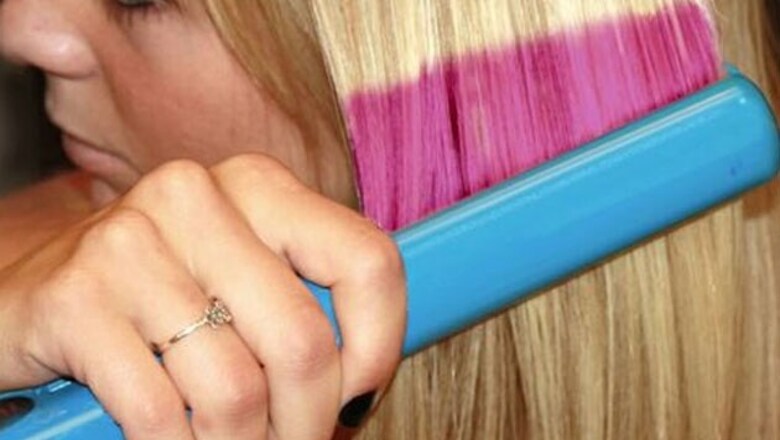
views
Washington: What if you could alter your hair to reflect any colour in the spectrum? It may soon become a reality! New research suggests individuals can alter their hair colour and use a flatiron to press a new hair pattern.
Researchers at the University of New Mexico and Los Alamos National Labs collaborated on the use of focused ion beam technologies and the way they can be used to pattern different materials.
Their research explores a way to etch diffraction gratings on individual hairs to reflect light in a specific way.
The project began in 2009 when Bruce C Lamartine disclosed an invention for non-chemical directional colouring of hair using milled or impressed nanopatterns. Lamartine and Zayd C Leseman explored ion beam etching on single strands of human hair.
Using Lamartine's ion beam control programmes, Leseman and his graduate students Khawar Abbas and Drew Goettler began experimenting with fine etching of the diffraction gratings which allowed them to create patterns that reflected specific bandwidths of light depending on how far apart the lines were, and how wide and deep they were.
The patterning technique proved to be most effective on brown hair, and also produced results on blond and black hair. Researchers speculate if someone wanted a permanent change in hair colour, they might be able to use something like a flatiron to etch the diffraction gratings into the hair.
The colour would depend on the portion of the light spectrum that was reflected. Change paddles on the flatiron and change the colour, or do special theatrical patterns in the hair, such as changing the diffracted colour that the audience sees as an actress walks under a spotlight.
"That's one way to do it, to make the pattern directly onto your hair, your permanent hair and that would be more of a permanent change until it grows out," Leseman said.
"The other idea was and still is to actually develop some kind of conditioner. Some kind of polymer coating for your hair, and then when you actually do the patterning with your flatiron that's specially developed for this polymer coating, maybe low heat or something like that.
"Then you could actually pattern the conditioner or the polymer on your hair first. And then it would easily wash out if you wanted it to go away, so that's not as permanent and as scary," said Leseman.
There are many other potential uses for the technology. It might be used as an information security feature on credit card readers or could be used to identify friend from foe in confusing situations.
The researchers said it could also be used to defend against potential terror attacks on civilian airplanes by making them invisible to the laser sights on missiles. The research was published in the Journal of Cosmetics, Dermatological Sciences and Applications.


















Comments
0 comment